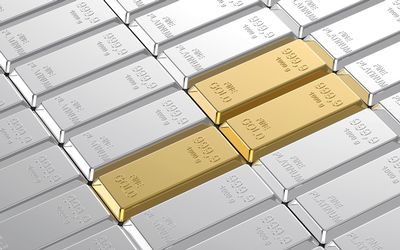COMMODITY prices have dropped significantly — but platinum mostly seemed to defy the odds.
Until recently, investors keen to gain exposure to this metal have been limited to buying shares in platinum companies, investing in exchange-traded notes or investing offshore. But new investment products are entering the market.
Last Friday, Absa listed the first fully backed physical platinum exchange-traded fund (ETF) on the JSE called NewPlat
According to Vladimir Nedeljkovic, head of investments in Absa’s corporate and investment banking division, it is hoped that the instrument will mirror Absa’s successful NewGold gold ETF.
Mike Brown of ETFSA.co.za said the new product would be a boon for South African investors who are keen to invest in the platinum sector but do not want to go through platinum miners.
“The new product is likely to be quite successful,” Mr Brown said. “Absa’s NewGold ETF has created something like R900m. In South Africa one is not allowed to buy precious metals, thus the only way one can get exposure is by going offshore to buy the physical commodities.
“The biggest advantage of a platinum ETF is that it is rand-denominated and therefore counts as domestic investment. Costs are very low as well, compared with overseas, with an average cost of 0.4% of the investment. This is a very low price and is a cheap way of getting into the platinum market.”
According to Mr Brown, the biggest demand is from institutions, many of which are keen to diversify the asset classes they are invested in.
Unlike gold, platinum is a precious metal with very real industrial uses. It is most useful as a catalyst. The largest industrial user is the automotive industry, which uses the metal in catalytic converters that scrub exhaust gases into less noxious emissions.
The largest user of platinum has traditionally been the European automotive industry. With the European economy in the grip of recession, the European auto market has been depressed as car sales have come down significantly.
This is one of the key factors weighing on the platinum price.
With emission laws tightening around the world and Europe aiming for cleaner air standards, the demand for platinum to use in catalytic converters will surely rise.
This demand has put a floor under the platinum price.
However, aside from the weaker external demand, there have been supply issues from South Africa, the largest producer of the metal. According to research by Frost & Sullivan, South Africa accounted for about 70% of global platinum supply, meeting a significant share of the 6.24-million ounces of global demand in 2012.
• This article was first published in Sunday Times: Business Times























Register/Login
Close XMy News
You can only set up or view personalised news headlines when you are logged in as a registered user. Thereafter you can choose the sectors of industry in which you are interested, and the latest articles from those sectors will display in this area of your console.
Login or Register.Top Stories
My Watchlist
You can only set up or view your share watchlist when you are logged in as a registered user. Thereafter you can select a list of companies and enter your share details to monitor their performance.
Login or Register.My Clippings
You can only clip articles when you are logged in as a registered user. Thereafter you can click on the "Read later" icon at the top of an article to save it to this area of your console, where you can return to read it at any time.
Login or Register.Change: -1.21%
Change: -1.31%
Change: -1.11%
Change: -1.12%
Change: -2.16%
Data supplied by Profile Data
Change: 0.00%
Change: 0.00%
Change: -1.21%
Change: 0.00%
Change: 0.00%
Data supplied by Profile Data
Change: -0.21%
Change: -0.11%
Change: -0.10%
Change: -0.09%
Change: -0.38%
Data supplied by Profile Data
Change: 0.00%
Change: 0.00%
Change: 0.00%
Change: 0.00%
Change: 0.00%
Data supplied by Profile Data